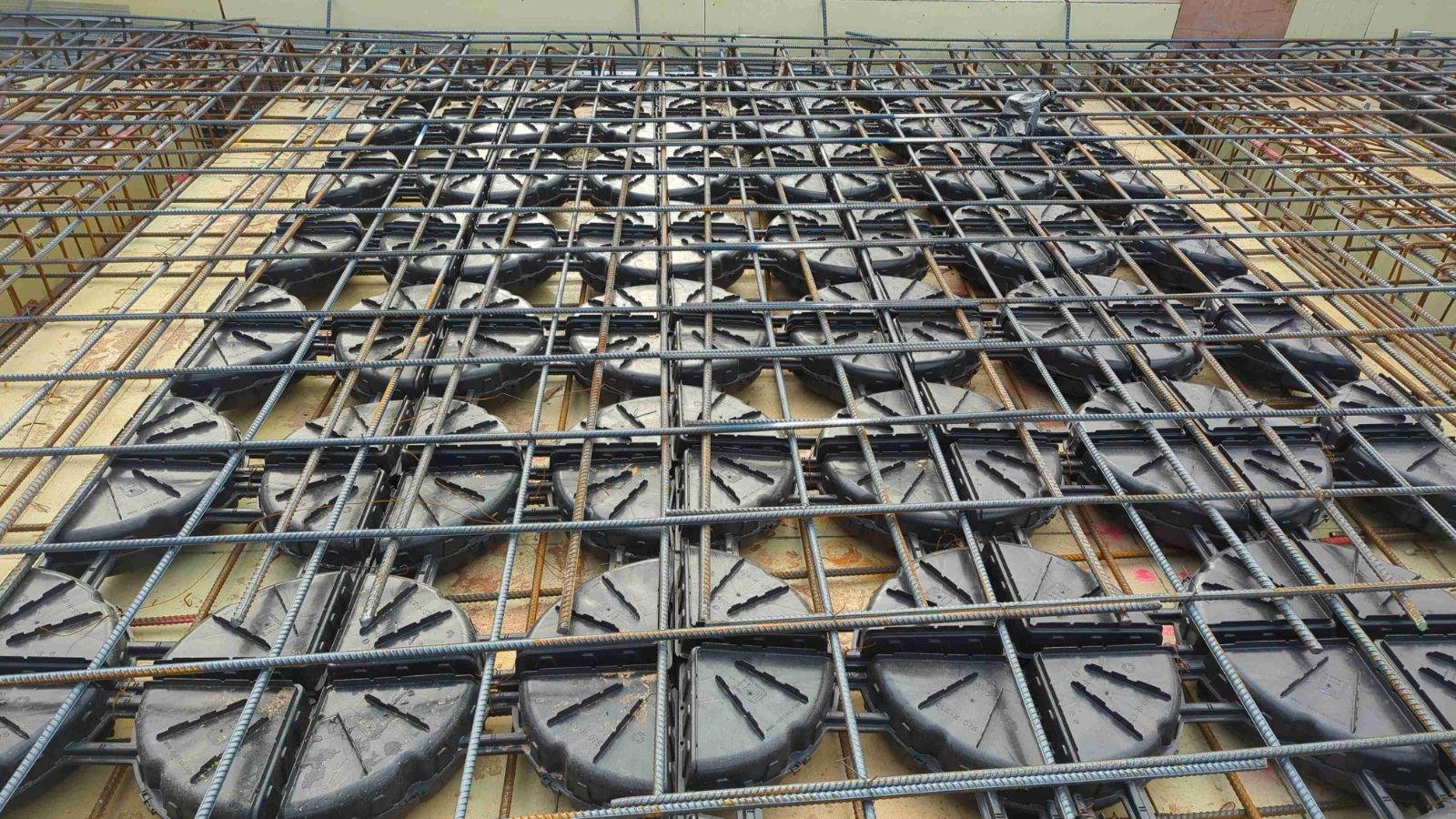
Vagelos Education Center at Columbia University Medical Center, New York NY
What if you could increase the unique advantages of a concrete structure while reducing volume and weight?
This extreme weight not only puts a strain on the slab itself but also exerts a great burden on the foundations and the framework of the building. Creating engineered voids in concrete slabs, where most of the weight typically resides, introduces a huge opportunity to reduce cost and environmental impact without compromising performance.
Many other time and cost-saving opportunities exist through the use of this system, beginning with material production and construction and extending through the entire life of the building. From excavation to topping-out, the positive contribution of voided slab weight reduction alone delivers surprising advantages for owners, designers, and builders.
We invite you to browse the examples presented on this site from the menu above. Then let’s get in touch to set up a detailed presentation, or use the contact form at the bottom of this page to see how voided concrete can be a valuable advantage for your project.
One System. Many Solutions.
Lighten The Load.
Just as at the University of Iowa Arts Center, pictured here, anytime weight can be reduced, time and cost will also be reduced. Voided concrete slabs accomplish this efficiently and without compromising safety, strength, stability or sustainability. Few systems in construction have the capacity to deliver this degree of added-value by reducing dependency on natural resources.
Longer spans with reduced deflection
Lighter foundation
Smaller columns
Clear Open Space.
At the Perez Art Museum in Miami, pictured here, voided concrete slabs provide an open floor plate with fewer columns and no beams to limit design and ultimate use possibilities. As needs change, your building is better prepared to adapt. If it can be imagined, concrete can help make it happen and there is a good chance voided concrete slabs will make it happen more flexibly.
Fewer columns
Provides a flat soffit
Bi-axial flat plate flexibility
Great Material Savings.
Voided concrete slabs means greatly reduced cost for concrete and steel as well as a large reduction in the cost and environmental impact from their production and transport to the job site. When concrete voids are combined with post-tensioning, both concrete and post-tensioning quantities are significantly reduced.
Lowers vertical costs
As much as 30% less concrete
As much as 10% less reinforcing
Simple Formwork Solution.
Concrete formwork constitutes a large percentage of in-place concrete cost. Flat concrete voided slabs simplify formwork by eliminating beams and the labor required to form them. The time savings created by the use of voided flat slabs, with their simplified formwork, clearly have a beneficial impact by improving project schedules.
Simplifies forming
Faster framing cycles without beams
System use is simple and highly reliable
Positive Impact on the Environment.
Voided concrete slabs rely on recycled materials and generate far less waste. Beginning with voids made of 100% recycled plastic, this approach lowers the building’s carbon footprint makes good use of abundant materials. Waste reduction extends to both concrete and steel in construction and at the end of a structure’s useful life.
100% recycled void formers
Reduces carbon impact
Contributes to LEED certification
Life Cycle Benefits.
Setting an example at the Perez Art Museum in Miami, pictured here, concrete buildings last and voided concrete slabs maximize the flexibility of these buildings to meet ever-changing demands. This unique capability can dramatically extend a building’s useful life and ROI. Voided concrete slabs and post-tensioning systems complement each other to efficiently reduce structural depth.
Lowers ongoing energy costs
Reduces maintenance
Reduces structural depth








